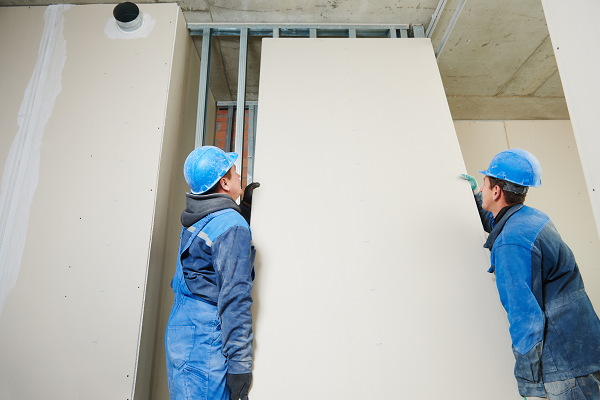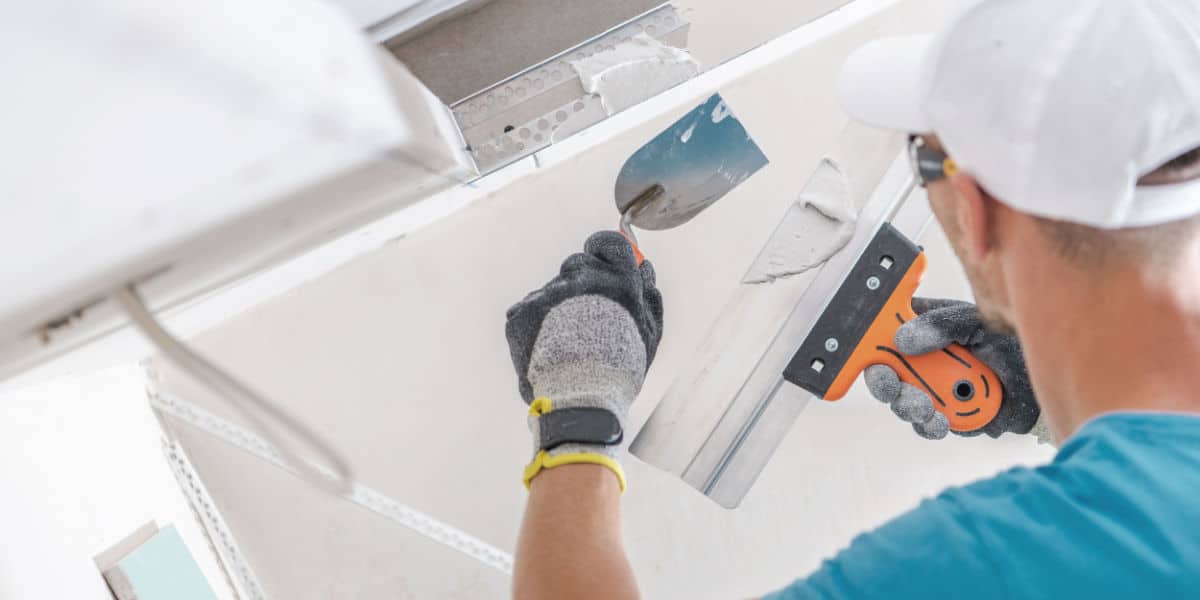Reliable Drywall Installation Solutions for Every Room
Reliable Drywall Installation Solutions for Every Room
Blog Article
Drywall Installment Made Easy: Tips for Perfect Outcomes
Drywall installment is typically viewed as an overwhelming job, yet with the ideal strategy and understanding, it can end up being a workable endeavor. Mastering methods for reducing, hanging, and completing drywall can significantly affect the outcome.
Selecting the Right Materials
Picking the suitable products for drywall setup is critical to accomplishing a long lasting and aesthetically pleasing surface. drywall contractor. The key element, drywall sheets, usually come in different thicknesses, with 1/2-inch sheets being conventional for interior wall surfaces. For locations calling for added dampness resistance, such as kitchen areas or restrooms, consider making use of environment-friendly board or concrete board, which are specifically made to withstand humidity

Furthermore, choosing the appropriate bolts-- either nails or screws-- is important for securing the drywall to the framing. Drywall screws are generally favored for their holding power and minimized danger of popping. Finally, take into consideration the complements such as guide and paint, which not only enhance the appearance but additionally shield the drywall from wetness and wear.
Preparing the Installation Area
Prior to beginning the drywall installment procedure, it is necessary to prepare the setup location thoroughly. This prep work entails a number of crucial steps to ensure a smooth and successful job. Clear the location of any type of furniture, devices, or blockages that might impede access. A tidy office decreases the danger of damage to existing items and enables reliable activity throughout setup.
Following, check the wall surfaces and ceiling for any kind of flaws, such as cracks, holes, or mold and mildew. Address these concerns in advance; patch any kind of problems and enable enough time for fixings to dry. In addition, make certain that electric outlets, buttons, and plumbing are properly placed and accounted for, as this will affect drywall positioning.
Take into consideration the ecological problems also. A stable temperature level and moisture level are crucial for optimal adhesion and efficiency of the drywall products. Use a dehumidifier or heating unit to produce ideal conditions. if essential.
Cutting and Hanging Drywall
The key to efficient drywall installation lies in the exact cutting and hanging of the panels. Begin by determining the space accurately, taking right into account any kind of obstructions such as electric outlets or windows. Make use of a straight side and an energy blade to score the drywall along your measurements, then snap it along the racked up line for a tidy break. For even more complex cuts, such as around electrical outlets, a drywall saw can be utilized for accuracy.

Always function from the top down and entrusted to right, making certain that you maintain a staggered pattern to boost security. Effectively hanging the drywall establishes the foundation for a smooth coating, inevitably resulting in remarkable cause your drywall job.
Taping and Mudding Methods
While proper cutting and hanging of drywall sets the phase, the following vital action entails grasping taping visit this site and mudding techniques to make certain a smooth finish. Taping is vital for strengthening joints and preventing splits; it includes embedding tape into the used joint substance (mud) Start with a quality fiberglass or paper tape, applying the tape over the joint and pressing it into the wet mud using a taping knife, making certain no air bubbles remain.
When the tape is in area, use a slim layer of joint substance over the tape, feathering the sides to produce a smooth transition to the drywall surface. Permit this layer to dry entirely before sanding it lightly to get rid of flaws. Repeat this process, using extra layers of mud as needed-- normally 2 to 3 coats-- while gradually widening the application location with each layer to achieve a seamless appearance.
After the final layer dries out, sand the surface with a fine-grit sandpaper up until smooth. drywall contractor. Keep in mind to wear a mask during fining sand to stay clear of inhaling dust particles. Understanding these taping and mudding methods is crucial for attaining a professional-quality finish in your drywall installment
Ending Up Touches for Perfection
Achieving a flawless drywall installation surpasses mudding and taping; it finishes in the ending up touches that boost the total appearance. These final actions are vital in making sure a professional-grade finish that improves the aesthetic appeals of your room.
Begin by fining sand the dried joint substance to produce a smooth surface. Utilize a fine-grit sandpaper and a review sanding block or pole sander for ideal control. Pay specific focus to edges and sides, as these locations have a tendency to require more careful work. After fining sand, clean down the walls with a damp towel to remove any dust particles, ensuring a clean surface for painting.
Next, use a guide specifically developed for drywall. This action is essential, as it helps secure the joint compound and gives a consistent base for the topcoat. When the primer dries out, examine for any type learn this here now of flaws, and repair as required.
Final Thought
To conclude, effective drywall setup pivots on the careful selection of products, complete prep work of the installation area, and specific execution of reducing and hanging methods. Proficiency of taping and mudding procedures is essential for attaining a smooth surface. Additionally, focus to ending up touches, consisting of priming and touch-ups, guarantees a professional-grade outcome. By adhering to these guidelines, the quality of craftsmanship can be considerably enhanced, adding to the overall aesthetic and performance of the area.
Drywall installment is frequently perceived as a difficult job, yet with the ideal method and expertise, it can become a convenient endeavor.Picking the proper products for drywall installation is vital to attaining a durable and visually pleasing coating.Before starting the drywall installment process, it is vital to prepare the installment location extensively. Grasping these taping and mudding techniques is critical for accomplishing a professional-quality surface in your drywall installation.
In verdict, effective drywall installment pivots on the mindful choice of materials, complete prep work of the installment area, and specific execution of cutting and hanging strategies.
Report this page